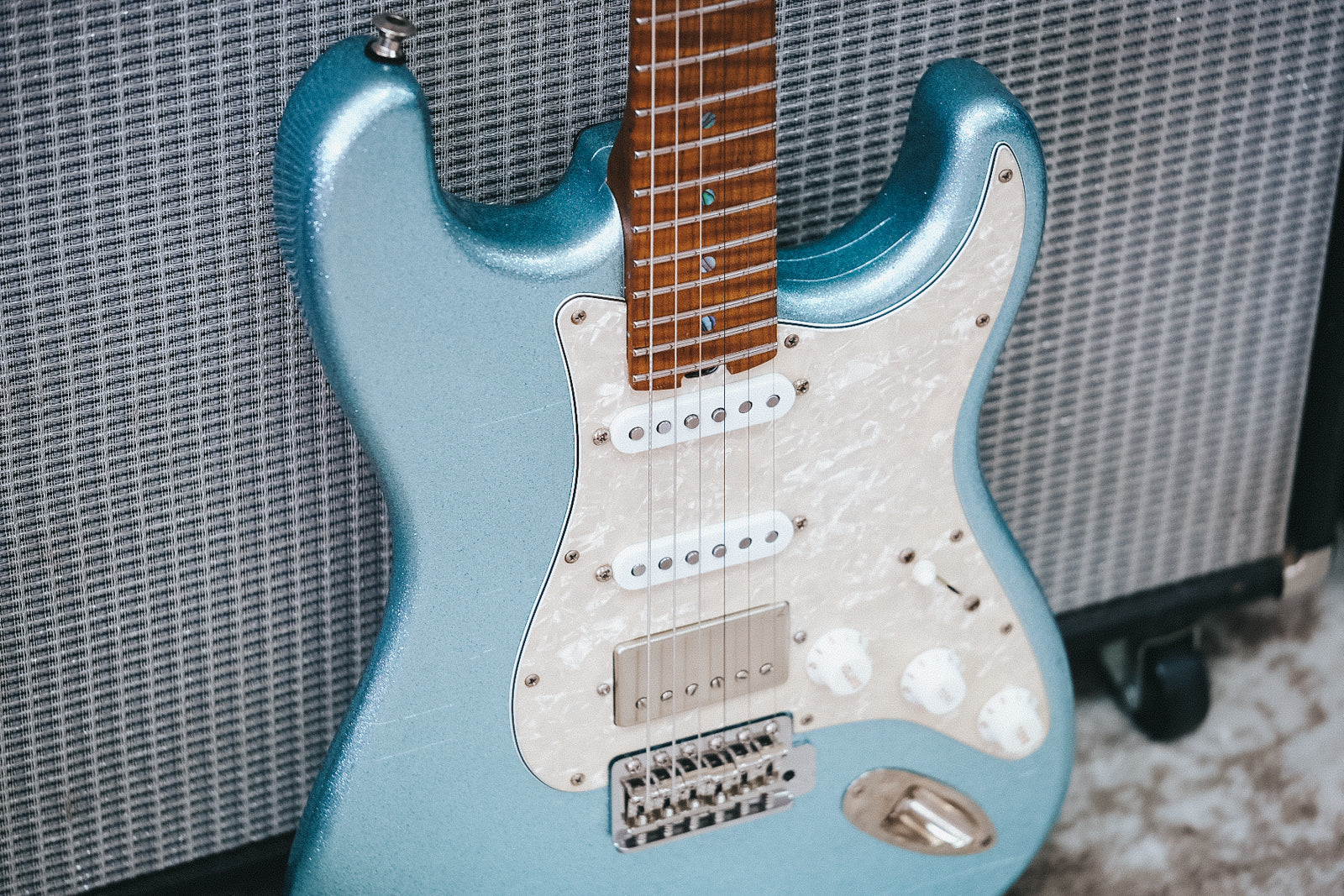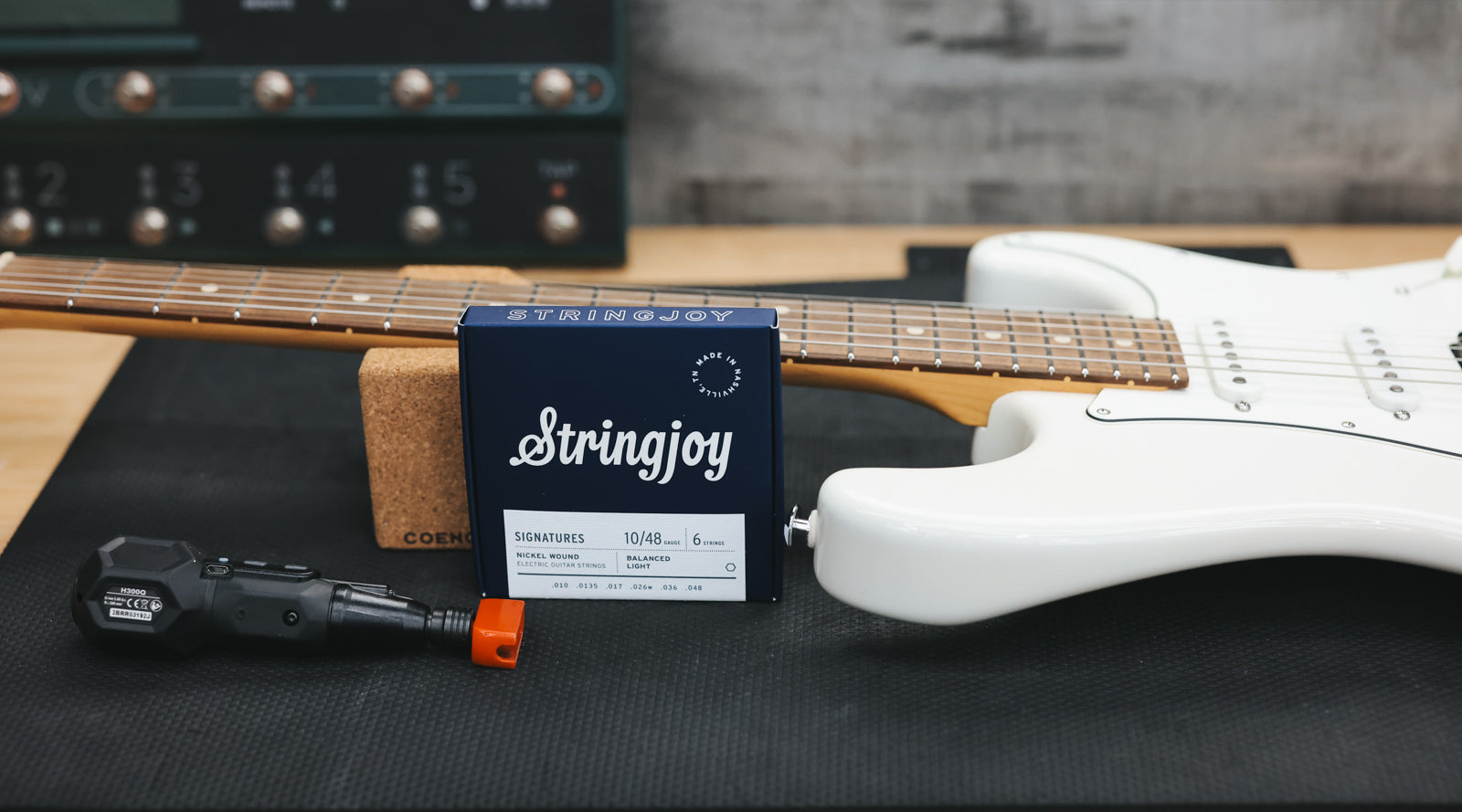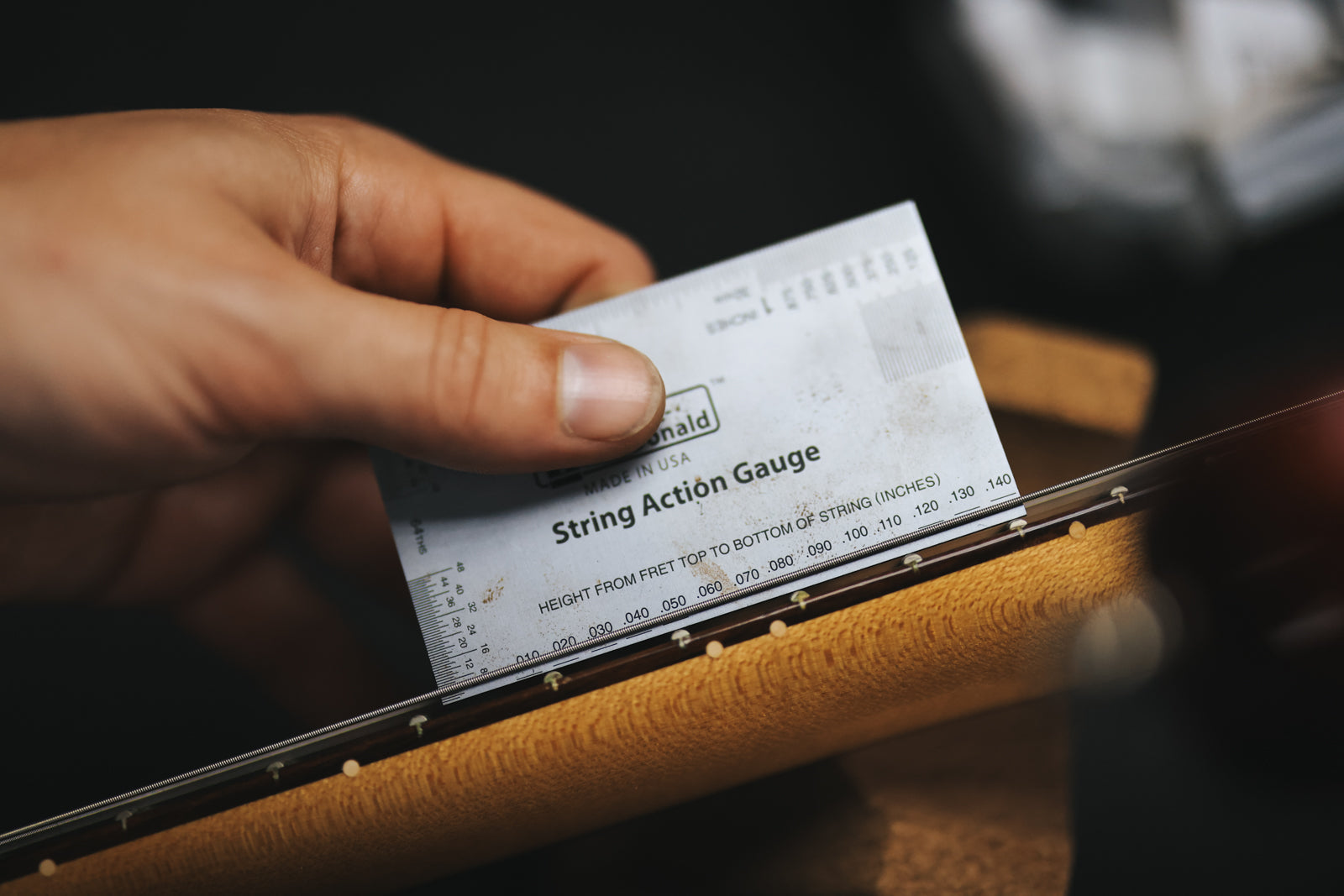
Most Versatile Electric Guitar
Electric guitars, where do I even start!? For some reason, more than 20% of all parents report their children having an interest in learning to play the guitar. So, from the beginning of our experience as humans learning the value of music to our souls, there’s this desire for tone. What makes electric guitars special is how you shape their sound with their pickups, effects pedals, amps, and as much creativity as you can muster. Some guitar models are one-trick ponies (amazing for one genre), while others are like Swiss Army knives of tone, able to handle whatever genre you throw at them. In this post, we’re talking about those more versatile electric guitars, the ones that give you your money’s worth by covering a range of tones. After all, if you’re investing in a guitar with a limited budget, why not get one that can do more than one thing well? We’ll start by tackling a big question many guitar players ask: what is the most versatile electric guitar out there? Then, I’ll share a roundup of my top picks (including a clear #1 and a couple of worthy runners-up) for guitars that can do it all. Finally, we’ll go over some tips on how to choose the best, most versatile electric guitar for you – no matter your playing experience or style goals.
Before we dive in, let’s set the stage. Playing electric guitar is an adventure. It can be as mellow or as face-melting as you want, and a versatile electric guitar lets you explore both ends of that spectrum. If you’re someone who plays a bit of everything, or you’re a beginner still finding your musical direction, a versatile guitar is a great option. It’s like getting multiple guitars in one! And yes, you’ll likely want a decent amp or amp sim to unleash those tones (if you’ve ever wondered do you need an amp for an electric guitar, we’ve got you covered in another post.)
TL;DR: not always, but it’s a whole lot more fun when you do. Now, let’s answer the big question and look at some guitars!
Most Versatile Electric Guitar
When we talk about the “most versatile” electric guitar, we’re asking: which guitar can cover the widest array of sounds and musical styles well? In my book, the champ is the Fender Stratocaster HSS (that’s a Strat with a humbucker in the bridge and single-coil pickups in the middle and neck positions). This configuration is often dubbed “HSS” for humbucker-single-single. Why the Strat HSS? It gives you the best of both worlds: the sparkle and clarity of single coils and the thickness and power of a humbucker in the bridge position. Plenty of players (myself included) have found that an HSS Strat can handle blues, rock, pop, and even some metal without breaking a sweat.
Of course, “most versatile” doesn’t mean perfect for absolutely everything; no guitar is. But an HSS Strat comes pretty darn close. It’s not just my opinion; many guitarists consider an HSS Strat to offer an unrivaled range of tones from one instrument. Even here at Lambertones, we often sing the praises of the HSS setup as a tonal Swiss Army knife. (In fact, in a recent guide for beginners, we noted that the HSS configuration gives you “the best of both worlds,” with a bright, clear bridge humbucker and warm single coils in the other positions.)
That said, there are a couple of other guitars that deserve recognition for versatility. Two classics come to mind as runner-ups: the Gibson Les Paul Standard & ES-335 models, and the PRS Custom 24. These are workhorse guitars used by countless pros, known for handling many genres exceptionally well. Below, we’ll dive into each of these guitars, what they’re made of, what makes them special, and just how far their tonal palette goes. By the end, you’ll see why these three (especially our top-pick HSS Strat) are often recommended when someone asks for the most versatile electric guitar that money can buy.
Versatile Electric Guitars to Consider
Before we break down the list, a quick note: There are many great guitars out there, and versatility can mean slightly different things to different players. I’m focusing on guitars that are widely praised for sounding great across multiple genres. In addition to that, I’m mentioning “mainstream” or “legacy” manufacturers, Fender, Gibson, PRS. Personally, I prefer to buy from boutique guitar builders because I become part of the experience of their creation, and so when I speak to the Fender HSS, know that I am by default including custom builders that build guitars in similar configurations. If you’d like to see some of the custom builders that we collaborate with today, you can check those out here.

Fender Stratocaster HSS – The “Best of Both Worlds” Strat
The Fender Stratocaster is a legend in the guitar world, and part of its fame comes from how versatile it is. The classic Strat has three single-coil pickups and a 5-way switch, which was already a game-changer back in 1954; Leo Fender basically gave players a triple pickup configuration that could do bright, warm, and in-between sounds. The HSS variation takes that versatile platform and turbocharges it by swapping the bridge single coil pickup for a humbucker. Why does that matter? A bridge humbucker adds output and warmth, making the Strat much friendlier to heavier rock and modern lead tones, especially those utilized so regularly in current CCM and worship tones when a Strat’s bridge single-coil might sound too thin or harsh. Meanwhile, you still have the single coils in the middle and neck for the classic Strat “sparkle” and quack.
In practice, a Strat HSS can cover an enormous sonic territory. Position 5 (neck pickup) gives you smooth, bluesy tones, think Hendrix or John Mayer style cleans and leads. Position 4 (neck + middle) yields that funky “out-of-phase” quacky tone, perfect for funk, R&B, or country licks. STOP. PAUSE. Let's get something straight; out of phase is in quotations because that is what most people believe is happening in positions 2/4 of the Strat. However, that isn’t true. The pickups are reverse polarity and reverse wound to each other, wired in parallel. This means that they are IN phase, and can either be hum-canceling or not, but they are not “out-of-phase”. This is a very common misconception, and creates confusion when people do experience a pickup set that is out of phase, because the results are VERY different.
The middle pickup alone is snappy and great for rhythm work. Position 2 (middle + bridge humbucker) is a really interesting option on an HSS Strat: you get a blend of sparkle and thickness that works for crunchy rhythm guitar sounds and ambient tones. Because it is a parallel connection between the single coil and the series humbucker coils, you do have a slight drop in volume output, but this doesn’t need to be a problem. And finally, the bridge humbucker on its own (position 1) kicks out enough power to handle hard rock riffs and soaring solos with ease. Want to play a pop gig, a blues jam, a hard rock show, and a Sunday service, all with one guitar? This Strat can do it.

Most Fender Stratocasters feature an alder or poplar body (sometimes ash), a bolt-on maple neck with a slim “C” profile, and a 25.5″ scale length that delivers a snappy response. Modern Strats keep the comfortable contours, 22 frets, and a classic “timeless” look, while the tremolo bridge adds expressive options. An HSS Strat retains that familiar feel but with more tonal range: the alder body and maple neck create a balanced sound, the single coils provide clarity, and the humbucker adds thickness and punch. From clean chords to heavy riffs, the HSS Strat is a flexible, reliable choice for beginners, seasoned players, and pros alike, making it one of the most versatile guitars you can own.

(Runner-Up #1) Gibson Les Paul Standard – Dual Humbucker Power with Surprising Range
The Gibson Les Paul is often associated with rock and blues, but make no mistake, it’s a versatile electric guitar in its own right. Introduced in the 1950s, the Les Paul Standard design has a solid mahogany body with a maple top (usually a carved flame maple cap on higher-end models) and a set-in mahogany neck. This recipe of tonewoods is legendary: the mahogany body gives you warmth and midrange punch, while the maple top adds a bit of brightness and bite. It’s a classic combo that results in a thick, singing tone with great sustain (there’s a reason Les Pauls are beloved for lead guitar work). The feel of a Les Paul is different from a Strat; it’s heavier, the neck tends to be chunkier (especially on “50s” style models), and the scale length is shorter at 24.75″, which makes string bending a little easier and gives a slightly warmer tone. Yet, once you get used to it, a Les Paul can become an extension of your body. Many players say these guitars practically play themselves when dialed in, and the sustain… oh, the sustain! Notes just ring out forever.

Alright, so we’ve hit on what it does so well. So what makes the Les Paul Standard versatile? A significant factor is the combination of dual humbucker pickups and the wiring. With a three-way toggle switch, you can use either the neck pickup alone, the bridge pickup alone, or both together. Each pickup has its own volume and tone control. This means you can blend the two pickups in the middle position by adjusting volumes, effectively crafting different mixes of neck/bridge tone to taste. For example, roll back the bridge volume a bit while keeping the neck full, and you get a warmer blend; do the opposite, and you add brightness to the neck tone. It’s a trick Les Paul players use to fine-tune their sound on the fly. On top of that, many modern Les Paul Standards (and similar models) come with coil-splitting or coil-tapping capabilities (we’ll write another blog post about the similarities and differences of these two tone features at some point) – pull a knob and you can turn those humbuckers into single-coils for a thinner, more Fender-like tone. Not all have this, but if yours does, it exponentially increases the tonal options. Even without coil splits, two humbuckers offer a lot: the neck pickup on a Les Paul is deep and buttery (great for jazz or clean blues, and of course those sweet woman-tone leads), while the bridge pickup is tight and aggressive (hello rock and roll!). The middle position, blending both, gives a nice rhythmic, clean sound that’s excellent for strumming or indie-style tones. It’s fuller than a Strat’s middle position, but still has clarity.
Les Pauls have been used in every genre: you’ll see jazz players with a Les Paul (the warm tone rivals many hollow body archtops), blues legends like Freddie King and Gary Moore pouring out soul through a Les Paul, rock icons (Jimmy Page, Slash, the list goes on and on) making history with it, and even metal players using hot-rodded Les Pauls or their single-cut cousins for drop-tuned soaring leads. The guitar’s inherent sustain and rich tone make it adaptable to tweaking your amp or pedals giving the player a lot of flexibility without too much variation that can make blending sounds difficult on the fly. It might not have the super bright spank of a Strat’s single-coil, but with EQ you can approximate a lot. And conversely, its humbuckers can push an amp into glorious overdrive that a stock Strat might not muster. There’s a reason that Gibson.com calls the Les Paul “one of the world’s most beloved electric guitar designs”.

Les Pauls are typically heavier guitars, with solid mahogany bodies that can weigh 9–10 pounds or more with hardware, though some models use weight relief, and the neck profile varies from slim 60s tapers for fast playing to chunky 50s styles for a fuller grip. Despite the weight, a Gibson Les Paul Standard style guitar is a versatile, inspiring choice for players who love humbuckers, offering everything from mellow jazz tones to searing rock leads, and with coil-splitting or tone tweaks, even twangy cleans, making it a guitar that invites exploration and earns lifelong loyalty from many artists.

(Runner-Up #2) PRS Custom 24 – Modern Versatility and Refinement
Paul Reed Smith’s Custom 24 is sometimes called the “Swiss Army knife” of high-end guitars. When PRS introduced it in the mid-1980s, it was designed to blend the best elements of Fender and Gibson into one instrument, and many would say PRS knocked it out of the park. The Custom 24 has a double-cutaway shape (kind of Strat-like), but with a mahogany body and maple top (very Gibson-like construction). The result is a guitar that has a balanced tone, warm and resonant, but with snap and clarity on the top end. PRS’s craftsmanship is top-notch; these guitars are known for their superb build quality, smooth playability, and stunning finishes (often with gorgeous flamed or quilted maple tops under translucent colors). The neck profile on a PRS Custom 24 is typically their “Pattern Thin” (at least on modern ones), which is a slim, fast carve that shredders typically love, but it’s also comfortable for chords. It’s kind of a middle ground between Fender’s modern C and Gibson’s Slim Taper, making it very player-friendly. And with 24 frets, you get two full octaves to play with (compared to 21 or 22 frets on Strat/Les Paul), which is great for lead players who venture up high.

The real magic of the Custom 24 is in its electronics and hardware. Most Custom 24s come equipped with PRS’s proprietary humbucking pickups (often the 85/15 pickups in recent models) and a 5-way blade switch that offers unique combinations, including coil-split sounds. Personally, I think PRS makes the finest pickups in the business for stock/OEM-fitted electronics. Not to say they cannot be improved on, but their core models come with premium hardware, which is usually the place where most instrument builders skimp. In fact, PRS uses a clever wiring that gives you several distinct tones: typically, you get the bridge humbucker alone, neck humbucker alone, both humbuckers (full), and then two settings that are coil-split combos for more single-coil-like tones. For example, one split position might give you the two inner coils of each pickup together, yielding a quack reminiscent of a Strat’s position 2 or 4; another might split one pickup and combine with the other humbucker in a certain way. The specifics can vary by model year, but the gist is you get both humbucker richness and convincing single-coil-type brightness at the flick of a switch. But PRS takes it even further, from what we’ve come to call “partial coil-splitting,” they use resistors that help to shunt the coil sent to ground, therefore reducing the amount of amplitude loss usually experienced when coil-splitting. The result is tons of usable sounds. The Custom 24 with 85/15 pickups and 5-way switching has become a go-to favorite of touring and studio guitarists for its build quality and versatility in tones.
The PRS Custom 24 is built for versatility, with flawless playability, a stable tremolo bridge, and locking tuners that make it easy to push your playing without fighting the guitar. Its mahogany and maple construction, quality pickups, and thoughtful design let it handle everything from pop and fusion to metal and long cover-band sets, making it a trusted all-rounder. While Core models are pricey, the SE series offers much of the same character at a lower cost, cementing the Custom 24 as one of the most reliable and versatile electric guitars available.

How To Choose The Best And Most Versatile Electric Guitar
Build Quality, Hardware, and Electronics
When choosing a versatile guitar, even from one of the options listed above, it’s essential to consider that many variables are at play, with some carrying more weight than others. It might seem obvious, but players sound better when they are comfortable with what they’re playing, so in a way, comfort and playability are just as important as tone when choosing a guitar. Other factors, such as neck profile, body contour, weight, and setup, all influence how natural it feels in your hands. A slim neck may suit fast runs, while a chunkier neck offers grip for chords, and body shapes like the contoured Strat often feel more ergonomic than the blockier Les Paul. Weight can make or break a great playing/sounding guitar, too; lighter guitars are easier on the shoulder for long sessions, while heavier ones provide a solid feel that some players love. Finally, a proper setup with smooth frets and comfortable action ensures the instrument invites you to play, explore, and grow without physical obstacles, making it easier to love your tone.
A truly versatile guitar isn’t just about tone variety; it’s got to be reliable in other areas, too. Higher build quality might cost more upfront, but it usually pays off in less frustration and more enjoyment. If your guitar stays in tune, feels solid, and sounds great without technical hiccups, you’ll be free to dial in any tone you want and trust that the instrument will deliver. Versatility = reliability, in many ways. So invest in as much quality as you can afford, your future self, seamlessly switching from genre to genre during a set, will thank you.

Budget and Value: Find the Sweet Spot
While it would be amazing to own a Fender Custom Shop Strat, a Gibson Custom Shop Les Paul, and a PRS Private Stock, most players don’t need to spend a fortune to get a versatile guitar. There are excellent options at every price point if you focus on value—solid build quality, reliable playability, and tonal flexibility for the money. In the sub-$500 range, standouts include the Yamaha Pacifica 112V (an HSS Strat-style with great versatility), Squier Classic Vibe Strats and Teles, PRS SE models, and even some Epiphone Les Pauls. These instruments might lack the refinement of their premium counterparts, but they’re absolutely gig-worthy and can deliver impressive results straight out of the box. I’d argue the PRS SE as the #1 choice here without question in the bang for buck race.
If you can stretch to the $500–$1000 range, your options expand to include Mexican-made Fender Player Series Strats and Teles, higher-end Epiphones, entry-level Gibsons, PRS SE Custom 24s, and Ibanez AZ models. Guitars in this range often hit the sweet spot, offering nearly pro-level performance and versatility without breaking the bank and without requiring a ton of expensive guitar tech maintenance just to get them playing nicely. A Player Strat HSS or a PRS SE Custom 24, for example, can cover a huge range of tones and easily serve as a long-term workhorse guitar without putting you on a payment plan.
Once you get into the $1000+ range, most guitars from brands like Fender, Gibson, PRS, Music Man, or Suhr will be excellent, and the choice comes down to nuance, feel, and brand preference. This is where you can start considering a custom boutique build as well, and while that's an exciting prospect, sometimes its hard to beat the reliability or consistency of "big brand production" - yes, I made that up, and I love supporting the little guy, but you don't have money to waste and hope you get lucky, right? A PRS Core, American Ultra Strat, or Gibson Standard can easily serve as a versatile workhorse, but a well-chosen $700 guitar can get you 90% of the way there, especially if you’re open to upgrades like swapping pickups. The used market is also worth considering since you can often score a higher-tier instrument for the price of a new mid-tier one, but you do take more risk, especially if buying sight unseen from eBay.com or Reverb.com.
Modding and Future Upgrades

Another angle is modularity and upgrades. Many players enjoy starting with a solid guitar and modding it over time, like converting a SSS Strat into an HSS setup with a fully-loaded pickguard built by us here at Lambertones, wink wink! This approach spreads out costs and lets you personalize the instrument. Above all, avoid overspending on features that won’t impact your playing needs, exotic woods and stainless frets are nice, but they don’t make a guitar inherently more versatile than a well-built $1000 model with high quality pickups and hardware. Focus on quality construction and versatile features, and you’ll have an instrument that can handle almost anything.
In Conclusion: Finding the most versatile electric guitar is like finding a musical companion that speaks your language but with many dialects. For a lot of us, the Fender Stratocaster HSS wears the crown of versatility. The Gibson Les Paul and PRS Custom 24 show that there’s more than one way to achieve do-it-all capability, whether through clever electronics or timeless design. Whichever guitar you lean toward, make sure it feels good in your hands, delivers the tones you need, and inspires you to try new things. A great versatile guitar should make you want to flip that pickup switch and see what else it can do, and the results hopefully are “quite a lot.” May you enjoy the tone journey as you seek to find the guitar that lets you make the music that reflects your soul.



Leave a comment
This site is protected by hCaptcha and the hCaptcha Privacy Policy and Terms of Service apply.